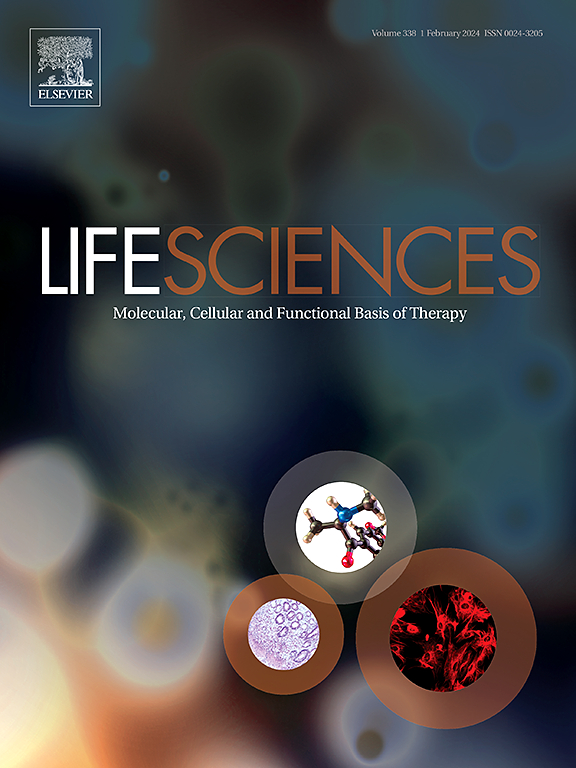单细胞RNA测序表征糖尿病引起的小鼠肺病理变化。
IF 5.2
2区 医学
Q1 MEDICINE, RESEARCH & EXPERIMENTAL
引用次数: 0
摘要
高血糖会加重肺部疾病,导致免疫防御紊乱和对感染的易感性增加。2型糖尿病(T2D)以胰岛素抵抗和胰岛素分泌不足为特征。T2D导致肺交替的机制尚不清楚。单细胞RNA测序的进步有助于表征T2D对肺部的影响及其改变的机制。我们的研究结果首先表明,在晚期糖尿病小鼠中,肺部免疫细胞的数量显著增加,这些免疫细胞主要是未成熟的多形核髓源性抑制细胞(PMN-MDSCs)。在糖尿病的早期阶段,I型和II型肺泡细胞(At I和II)表现出间充质表型,并表现出维持肺免疫所必需的几种关键细胞因子的表达减少,包括Cxcl15、Cxcl14和Il34。此外,由于几种MHC II型蛋白的下调,AT II的抗原呈递细胞功能在糖尿病小鼠中明显减弱。此外,干扰素相关基因Ifnar1和Ifnar2的表达降低,以及sfpd表达受损,会损害糖尿病小鼠的肺免疫功能。这些致病变化导致糖尿病患者肺部呼吸道合胞病毒和肺结核的易感性和严重程度增加。除了肺泡细胞外,肺毛细血管内皮细胞也表现出不成熟的过渡表型,血管生成能力显著增加。我们的研究结果对糖尿病影响下的肺部病理进行了全面的探索,并解释了影响糖尿病患者肺部免疫的多种因素。本文章由计算机程序翻译,如有差异,请以英文原文为准。
Characterizing the diabetes-induced pathological changes of the mouse lung by single-cell RNA sequencing
Pulmonary disorders are exacerbated by high blood sugar, leading to a disordered immune defense and increased susceptibility to infection. Type 2 diabetes mellitus (T2D) is characterized by insulin resistance and inadequate insulin production. Mechanisms leading to pulmonary alternation due to T2D are not clear. The advancements in single-cell RNA sequencing aid in characterizing the effects of T2D on lungs and its altered mechanisms. Our results first revealed that in late-stage diabetic mice, the number of immune cells in the lungs significantly increased, with these immune cells predominantly being immature polymorphonuclear myeloid-derived suppressor cells (PMN-MDSCs). At the early stages of diabetes, alveolar cell type I and type II (AT I & II) exhibited a mesenchymal phenotype and showed reduced expression of several key cytokines essential for maintaining lung immunity, including Cxcl15, Cxcl14, and Il34. Additionally, the antigen-presenting cell function of AT II, resulting from the downregulation of several MHC type II proteins, was markedly diminished in diabetic mice. Moreover, decreased expressions of interferon-related genes Ifnar1 and Ifnar2, along with impaired Sftpd expression, compromised lung immunity impairment in diabetic mice. These pathogenic changes contributed to the increased susceptibility and severity of respiratory syncytial virus and tuberculosis in the lung of diabetes. In addition to alveolar cells, pulmonary capillary endothelial cells also exhibited an immature transition phenotype, with a significant increase in angiogenic capacity. Our findings provided a comprehensive exploration of lung pathology under the influence of diabetes and explained the multiple factors impacting lung immunity in diabetic conditions.
求助全文
通过发布文献求助,成功后即可免费获取论文全文。
去求助
来源期刊

Life sciences
医学-药学
CiteScore
12.20
自引率
1.60%
发文量
841
审稿时长
6 months
期刊介绍:
Life Sciences is an international journal publishing articles that emphasize the molecular, cellular, and functional basis of therapy. The journal emphasizes the understanding of mechanism that is relevant to all aspects of human disease and translation to patients. All articles are rigorously reviewed.
The Journal favors publication of full-length papers where modern scientific technologies are used to explain molecular, cellular and physiological mechanisms. Articles that merely report observations are rarely accepted. Recommendations from the Declaration of Helsinki or NIH guidelines for care and use of laboratory animals must be adhered to. Articles should be written at a level accessible to readers who are non-specialists in the topic of the article themselves, but who are interested in the research. The Journal welcomes reviews on topics of wide interest to investigators in the life sciences. We particularly encourage submission of brief, focused reviews containing high-quality artwork and require the use of mechanistic summary diagrams.
 求助内容:
求助内容: 应助结果提醒方式:
应助结果提醒方式:


